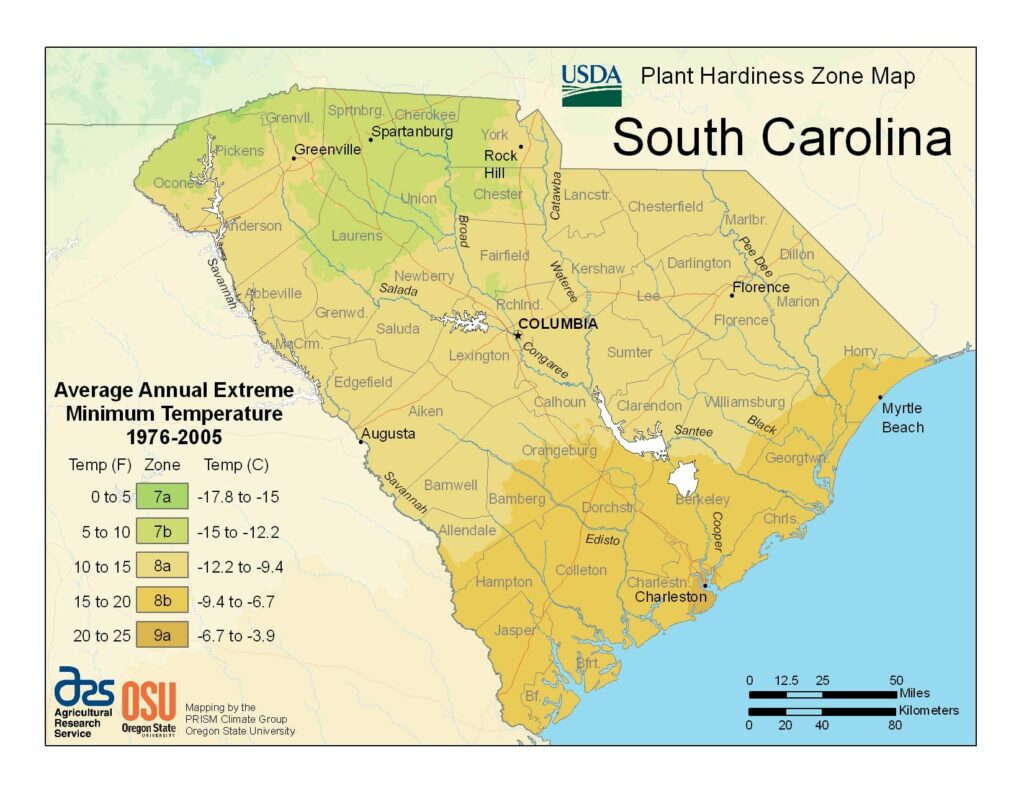
South Carolina has a humid subtropical climate, ranging from USDA Plant Hardiness Zones 7a through 9a.The state has variable weather per different areas so get to know which zone your city is located in so that you can address and avoid potential issues before they become problematic.
The USDA zones map is a useful system for determining what plants will survive and grow in certain areas ofSouth Carolina.
Understanding how these hardiness zones work means you can choose the right planting time, and optimize growing for your climate.
High-elevation areas in the Upstate area have fewer subtropical characteristics than areas on the Atlantic coastline.
In the summer, South Carolina is hot and humid, with daytime temperatures averaging between 86–93 °F (30–34 °C) in most of the state and overnight lows averaging 70–75 °F (21–24 °C) on the coast and from 66–73 °F (19–23 °C) inland.
Coastal areas of the state have very mild winters.
January overnight low is around 32 °F (0 °C) in Columbia and temperatures well below freezing in the Upstate. While precipitation is abundant the entire year in almost the entire state, the coast tends to have a slightly wetter summer, while inland, the spring and autumn transitions tend to be the wettest periods.